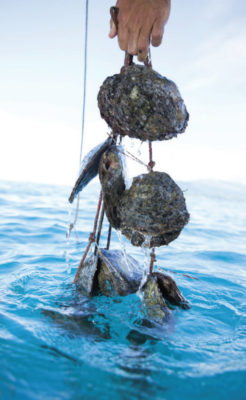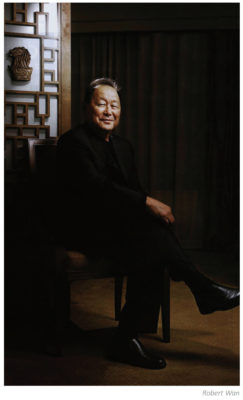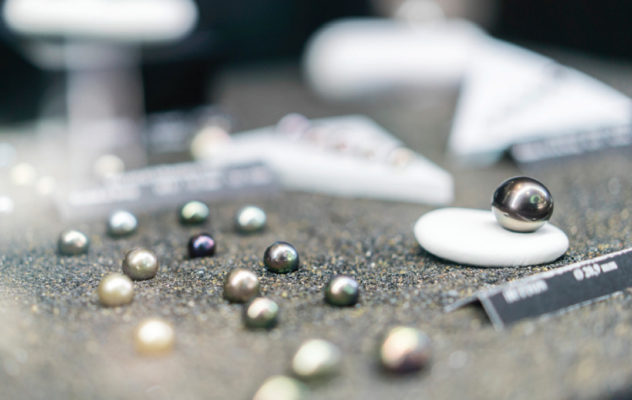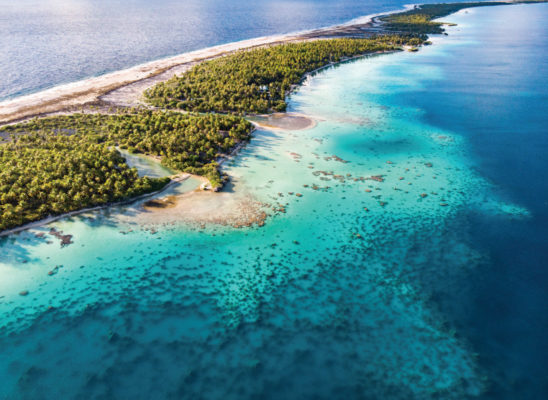There’s just something special about pearls, and the most unique and beautiful pearl is without any doubt the black Tahitian pearl. Up until a few decades ago, only the French Polynesian people had access to the Queen of Pearls until a man who’s been dubbed the Pearl Emperor introduced it to the world.
To celebrate the Tahitian pearl’s 60th anniversary, Richard Wan, Commercial Director of the family group and Robert Wan’s grandson, has given his expert advice on what’s so particularly special about this unique pearl.

Facts about the Tahitian pearl
• The production of a single Tahitian pearl takes at least 4 years.
• They are formed from the black lip oyster (Pinctada Margaritifera).
• The Tahitian pearls aren’t actually black. The wide range of hues includes blue, green, brown or silver, but never a true
black. Traditionally the most sought-after Tahitian pearls will have a dark green body colour and peacock overtones.
• There are up to 1000 pearl farms in French Polynesia. Despite its name, the Tahitian pearl is actually not produced on the island of Tahiti, but in the two archipelagos Tuamotu Islands and Gambier Islands.
• Only 15 years ago a perfect strand of black pearls for $100,000 would have been considered a bargain, while today the price is considerably lower due to the expanded industry.

How to choose a pearl
The pearl is known for being hugely versatile available in a wide range of mesmerising shades and shapes and is available in different pearl ratings based on their imperfections. “The most important thing is to choose a pearl shape and colour that suit your style the most, not based purely on the price,” says Richard Wan. “While a perfectly round peacock pearl is extremely rare, you should only pick the pearl that you can see yourself wearing for years to come.”
The Tahitian pearl comes in countless hues: black, grey, medium grey, yellow, brown and so on. There are five main undertones (or subsidiary colours): pink, green, pistachio, blue and magenta. Some colours, like peacock green, are particularly sought after but your taste should only be the reason for your choice.
Shape: Tahitian pearls come in many different shapes, whereas the most popular and rare one is the perfect sphere. Other shapes include the asymmetrical baroque pearl, which has lately gained traction in the industry, the button, the
pear, the teardrop etc.

The origin of the Tahitian pearl
Ancient Polynesian legends believed the god of fertility and peace, Oro travelled on a rainbow to visit Earth and he brought a magical oyster with him to the people of Polynesia. Inside the oyster, a gorgeous black pearl was formed inside which Ora then gifted to Princess Bora Bora.
One of the biggest pioneers in introducing the Tahitian pearl to the world was Robert Wan, who’s the biggest producer of the pearl industry today. Thanks to Wan, the Tahitian pearl has been ranked as the only French gem, the star of haute-Joaillerie (fine jewellery) and answers to more than half of the country’s export earnings.

“Investing in a piece of Tahitian pearl jewellery is a big decision, and at Robert Wan, we believe in the importance of making an informed one. We want to educate the customer about the complicated process behind it, how unique they all are and what kind of pearl is best for you.”, says Richard Wan.